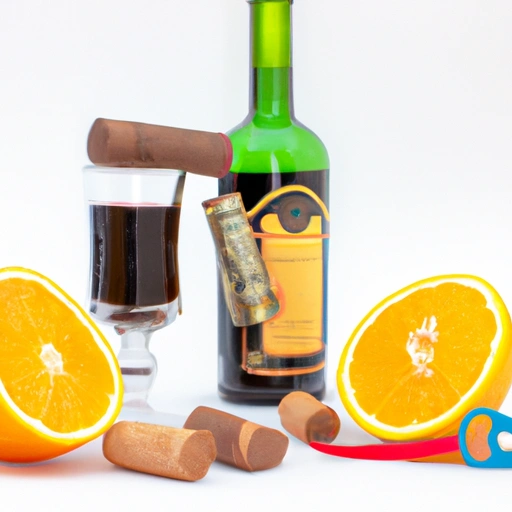Orange Liqueur
Description

Orange liqueur is a sweet and aromatic spirit made from the distilled essence of orange peels. Typically used in a variety of desserts, cocktails, and savory dishes, this versatile ingredient can elevate the flavor profile of countless recipes. Orange liqueur comes in several styles, each with varying levels of sweetness and potency, from the dry curaçao to the rich and mellow Grand Marnier. Measurements in recipes may vary, with American units often noted in fluid ounces (fl oz) or cups, while European and Azjan recipes might call for milliliters (ml) or liters (l).
Common uses
Orange liqueur is widely used as a flavoring agent in both sweet and savory dishes. It's a common ingredient in mixed drinks, such as the classic Margarita, the Cosmopolitan, or the Sidecar. In cooking, it's used to deglaze pans, add zest to sauces, and to macerate fruits. Its sweet and fruity notes make it an excellent addition to desserts like chocolate mousse, crepes Suzette, and various pastries.
Nutritional value
Calories
Orange liqueur is high in calories, with an average of 103 calories per 1 fluid ounce (30 ml).
Protein
This ingredient contains negligible amounts of protein.
Fat
Typically, orange liqueur has no fat content.
Carbohydrates
Most of the calories in orange liqueur come from carbohydrates, primarily sugars, with about 11 grams per 1 fluid ounce (30 ml).
Vitamins
Though not a significant source of vitamins, some orange liqueurs may contain trace amounts of vitamin C from the orange peels.
Minerals
Orange liqueur does not contain a notable amount of minerals.
Health benefits
Orange liqueur is consumed in moderation, primarily for its flavor rather than health benefits. However, the presence of orange peel may contribute a small amount of antioxidants to the diet.
Potential risks
Due to its high sugar and alcohol content, orange liqueur should be consumed in moderation. Overconsumption can lead to weight gain and an increased risk of alcohol-related diseases.
Common recipes
Orange liqueur is used in a variety of recipes ranging from classic cocktails like Mai Tais and Long Island Iced Teas to desserts such as orange-flavored cakes, truffles, and fruit salads.
Cooking methods
While not typically used as a primary cooking method, orange liqueur is often added at the end of cooking to preserve its delicate flavor or used in flambéing to add drama and a caramelized finish.
Pairing with other ingredients
It pairs well with chocolate, vanilla, and fruit-based desserts. In savory dishes, it complements the flavors of duck, pork, and seafood, especially when combined with herbs and spices.
Summary
Orange liqueur is a diverse and flavorful ingredient cherished in both the culinary and beverage industries. Its rich history and unique taste contribute to a wide range of applications, from classic cocktails to gourmet dishes. While not a health food, it can be enjoyed in moderation to add a special touch to your favorite recipes.